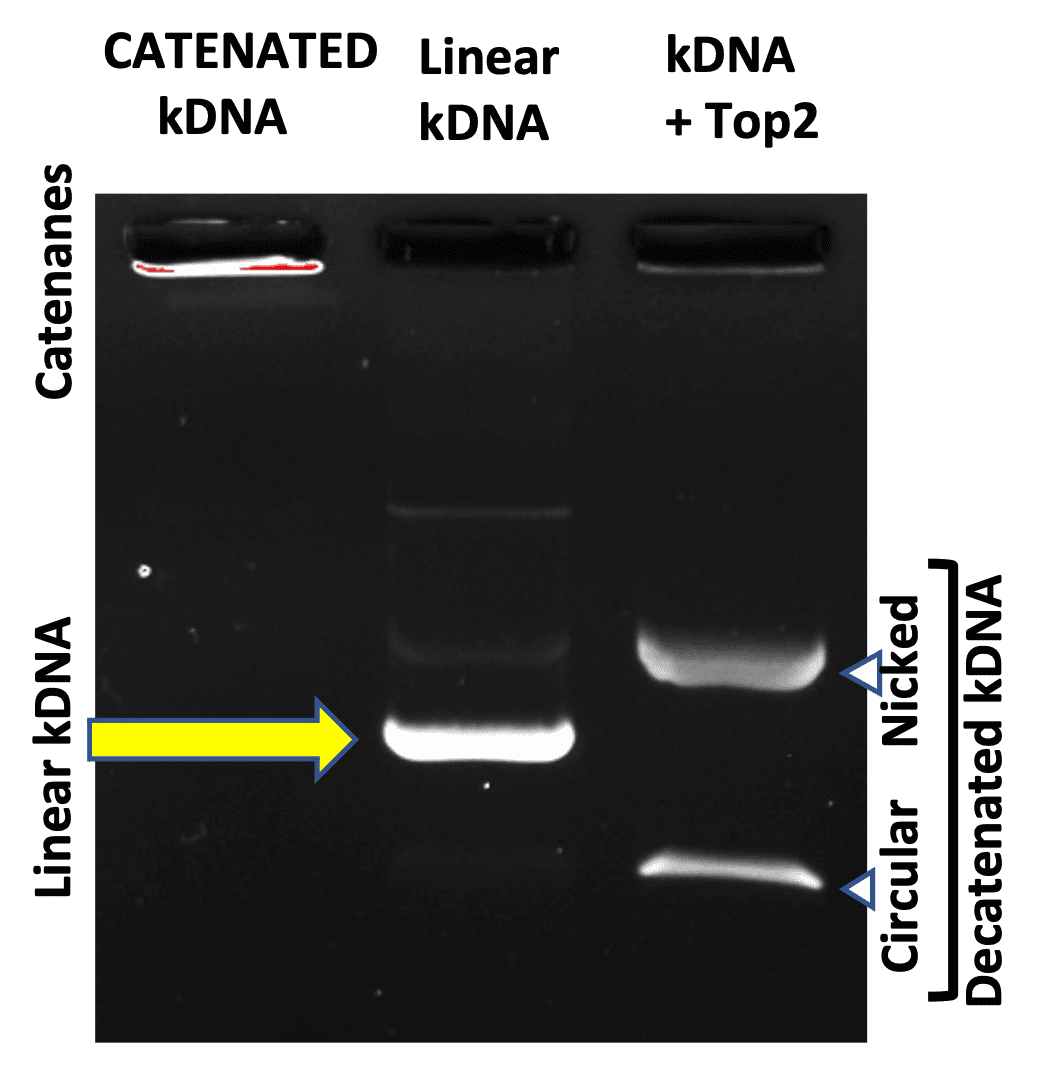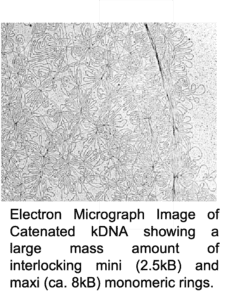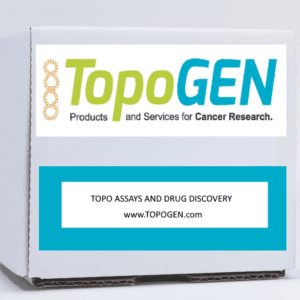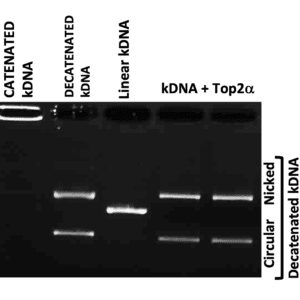Assays employing crude extracts for Top2 (both human and bacterial) that rely on relaxation of supercoiled DNA can be complicated due to the presence of contaminating topo I. Additional complications arise with contaminating nuclease activity (due to Mg++) which degrade or nick the supercoiled substrate. These problems can be avoided by using a catenated kDNA substrate prepared from the kinetoplast of the insect trypanosome Crithidia fasciculata. KDNA is an aggregate of interlocked DNA minicircles (mostly 2.5 kb) that form extremely large networks of high molecular weight. As a result, these networks fail to enter an agarose gel. Upon incubation with Top2 (Top2a, Gyrase or Top IV) which engages DNA in a double stranded breaking and reunion cycle, minicircular DNAs are effectively released ( and decatenated). The decatenated minicircles move rapidly into the gel owing to their small size. This reaction will not occur with topoisomerase I. TopoGEN has modified the original gel system to allow additional discrimination of activities using kDNA. The products of the reaction can vary as shown in the graphic above. We offer marker kDNAs, shown here, to clearly identify reaction products, in this case the decatenated kDNA forms.
Decat kDNA Quality Control Tests
- For catenated KDNA substrate, at least 90% of the DNA will be retained in the well of a 1% agarose gel.
- Decatenation of each batch of kDNA is tested with purified topoisomerase II.
The marker is shipped at ambient temperature and should be stored a 4°C.
References
- Miller et al., J. Biol. Chem. 256:9334-9339 (1981)
- Muller et al., Biochem. 27:8369-8379, 1988
- Muller et al., Nuc. Acid. Res. 17:9499, 1989




